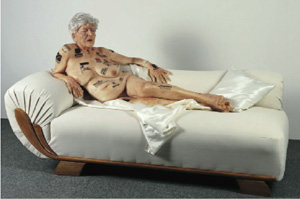Thursday June 22 2006
Objectives and Objectivity
Hi Friends,
I’m happy to be back in NYC. And to be posting on the Thing. I was teaching in Georgia this year, outside Atlanta. It has taken me a while to get back into the spin here…
On my way back home in mid-May I visited first Earthaven, an eco-village outside Asheville, N.C., for an overnight stay. The place is off the grid except for telephone. I checked my email using homemade hydroelectric power from a stream. Crapped in a composting toilet. In Baltimore I ate crabcakes at the food court. It’s true, New York doesn’t know what a crab cake is. Then I stopped in to chat with Cira Pasqual Marquina, curator at the Contemporary Museum. She had just opened her new show, “Headquarters: Investigating the Creation of the Ghetto and the Prison Industrial Complex” (through August 27, 2006). We went to Red Emma’s infoshop and had lunch. Cira’s partner Chris Gilbert had left for Berkeley to serve as Matrix curator at the University of California museum there…







